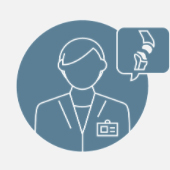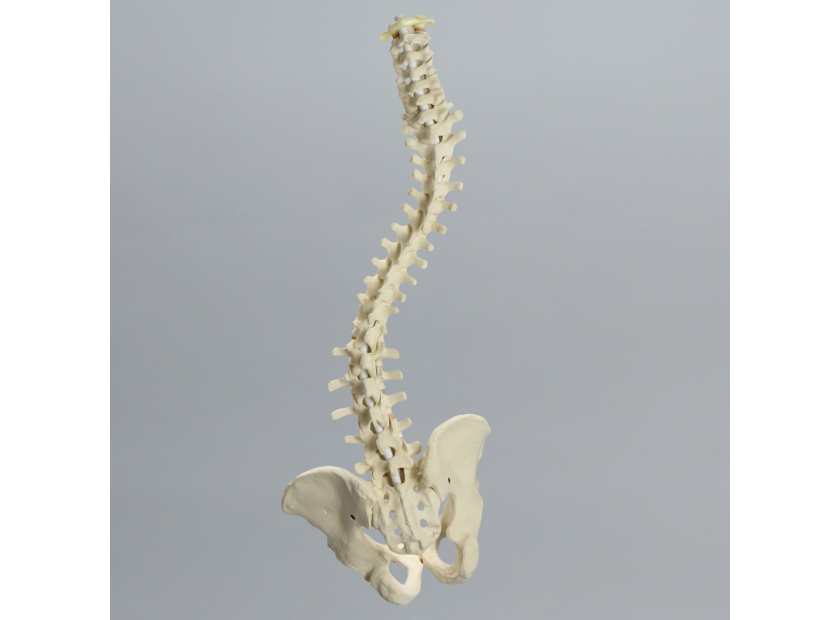Flexible Spine Models Better Demonstrate Clinical Conditions
Medical instruction has practical goals. Every step—from theory and fundamentals through to hands-on application in clinical settings—is made in preparation for the day trainees treat actual patients. That’s why it is critical that the tools used to impart these lessons be as realistic and effective as possible.
Many different fields have to master interventions along the spine, and this means a whole lot more than simply memorizing C1 through L5. Flexible spine models and those with dynamic features such as haptic feedback, realistic materials, and radiopaque construction help to create more competent specialists because they better replicate real clinical conditions.
Spine Models and Features for Every Field
Back pain and spinal maladies and abnormalities are the leading cause of disability around the world. In America alone, around 30 million people experience back pain at any given time and more than 80% will experience it in their lifetime. It’s an economic as well as healthcare issue, as back pain is responsible for 260 million lost workdays each year.
This risk profile and the central position and function of the spine in locomotion, strength, and the transference of nerves means it is the subject of many specialized medical fields. These fields each have their own educational requirements, which in turn require unique spinal models.
There are highly specialized spinal models available for:
- Chiropractics
- Emergency Care
- Neurosurgery
- Orthopaedics
- Pain Management
- Pediatrics
- Physiatry
Within each of these fields, there are training models that can help replicate specific best practices and procedures, providing hands-on experience of foundational surgical and treatment skills.
Simulation Is the Consensus
There is consensus throughout the orthopaedic field that surgical and advanced treatment skills should be first approached in a simulated training environment before entering the operating room or engaging with patients. The use of advanced models is cheaper, safer, and better suited to the desired benefits of repetition and controlled presentations.
Delaying real-world encounters means trainees must learn on cadaveric or simulated models. While cadavers offer realism, their availability is limited, and their acquisition and maintenance present ethical, cost, and legal challenges. In fact, a British study found that the use of cadavers was the most expensive and least effective resource for teaching anatomical fundamentals.
Such a reality leads to a logical dependence on engineered models throughout medical education. Fortunately, the current generation of medical training models, especially in the orthopaedic field, are dynamic enough to efficiently teach transferable, practical specialist skills.
Practical, Effective Education Resources
The broad range of causes and interventions relating to the spine has given rise to a diverse range of educational models. Unlike the random nature of clinical presentations and compromised cadaveric samples, engineered solutions can be hyper-realistic or more abstract, depending on the goal of the instructor.
Flexible spine models, for example, can be designed to replicate scoliosis conditions. These models have a full spine and pelvis, anterior and posterior ligaments, and flexible discs. This permits repeatable reduction of scoliosis angulation and rotation.
Alternatively, there are single vertebrae and limited spinal section models available in transparent materials to demonstrate the mechanics of spinal devices and interventions. These models offer hands-on, three-dimensional lesson participation, which is proven to be a more effective teaching model.
These specific examples are built from the broad range of materials and features currently available to spinal best practice instructors.
Cutting Edge Construction
Improvements in the collaboration between engineers and educators have led directly to the creation of a new, more effective range of medical training models. These models are hands-on, responsive, and highly representative of real-world conditions, not just in construction but in performance and simulation.
These fundamental elements can be combined to create resources for any field and any level of training:
Haptic Feedback |
Models can be fitted with sensors that exhibit sounds when triggered. This form of instant response helps hone psychomotor skills and triangulation when using a range of surgical devices and can replicate the pressure conditions of live surgery. |
Realistic Materials |
The spine is not made of materials uniform in texture, tensile strength, absorption, or performance, so effective models can’t be either. The best models include flexible vertebrae, porous bone, malleable rods for limited manipulation and fixation, and extractable discs |
Radiopaque |
Back pain is notoriously hard to diagnose, especially in the lower lumbar region, so models can be created to encourage the use of imaging techniques. Radiopaque materials block radiation, as used in x-ray, and can be used to replicate real-world presentations. |
Dual Usage Models |
Students can train both open and arthroscopic interventions on the same model. This economical, as well as realistic, approach is at the core of using repeatable, reliable, and affordable models across cohorts. |
Buildable Models |
Advanced models include variations that can evolve throughout a medical course. This dynamic potential allows students the time to scale the learning curve of complex procedures through repetition and increasing challenges. |
These features have already been combined in dozens of configurations to prepare students for real-world application of their knowledge. Wherever there is a gap in existing resources, however, there is scope to create new models in collaboration with leading engineers.
Flexible Spine Models and More
An effective training model has a clear real-world application and correlation. Even the abstract models that allow students to better visualize the mechanics, movements, and outcomes of specific intervention and devices are intended to service a real-world need.
Flexible spine models, radiopaque joints, realistic bone materials, and surgical models with haptic feedback are replacing cadavers and operating room instruction because they can recreate clinical conditions without the risk and cost of the real thing.
These innovations were brought about by medical instructors who searched for more effective ways of transferring practical skills to patient interventions. If you identify a need, you can work with an engineering team to meet it.
Sawbones engineers have the creativity and technology to help any medical instructors turn their knowledge into practical resources. For more information on our offerings or to talk about custom training models, contact us at 206-463-5551.

If you're seeking something you can't find on our website, our sales team is happy to help. We can either direct you to the right model or provide a free quote on the right custom project to meet your needs. Discover options with our clear bone models, laminated blocks, custom displays, or other machining projects.








